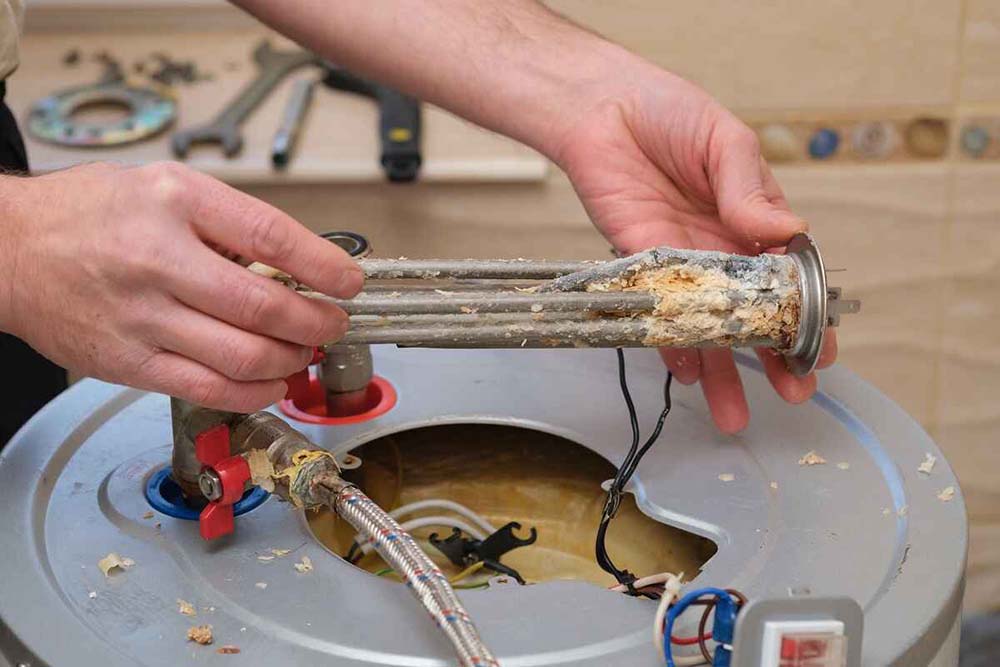Where Sediment Buildup Comes From and What It Does to Your Water Heater
Home /

Water heaters are workhorses that operate quietly in the background until something goes wrong. One of the most frequent yet overlooked problems is sediment accumulation. While this natural process happens gradually, it can significantly affect your storage-type unit’s efficiency and lifespan if left unaddressed. USA Pipe Repair is the plumber in Henrico, VA that locals turn to for water heater services, and we’re here to provide more information on keeping your appliance in good shape for years.
How Sediment Gets Into Your Water Heater
Sediment comes mainly from the minerals naturally present in your water supply. If you have hard water, which contains higher levels of calcium and magnesium, these minerals can settle at the bottom of the tank over time. Tiny particles like sand or rust from old pipes can also enter your water heater and collect inside. Every time the unit heats water, these minerals separate from the water and sink to the bottom. Without regular flushing, this buildup continues to grow thicker year after year.
The Impact of Sediment on Heating Efficiency
The sediment buildup creates a barrier between the burner or heating element and the water that needs to be heated. This means the system has to work harder and use more energy to heat the same amount of water. You may notice that your hot water runs out faster or that the water temperature is not as high as it should be. Over time, this added strain can lead to higher energy bills and less reliable hot water.
How Sediment Can Damage Your Water Heater
If ignored, sediment buildup can do more than just lower efficiency. The extra heat trapped under the sediment can cause the tank to overheat in spots, which weakens the metal and may lead to leaks or cracks. Sediment can also clog the drain valve, making routine maintenance harder. In some cases, the heating element can burn out sooner than expected. This damage often means expensive water heater repairs or even needing to replace the entire unit earlier than planned.
Preventing Sediment Problems
The good news is that sediment buildup is preventable. Flushing your water heater at least once or twice a year can help remove the loose sediment at the bottom of the tank. If you’re not comfortable doing a flush yourself, a licensed plumber can do it quickly and safely. Installing a water softener is another option if you have hard water, as it reduces the minerals before they reach your tank. Regular water heater maintenance by a professional can also help spot any problems early.
A common question from homeowners is whether sediment buildup can also affect tankless water heaters. The answer is yes, it can. While tankless water heaters do not have a storage tank (hence the name), they still have components that can become clogged with sediment over time. This can affect their performance and efficiency, similar to traditional models.
We at USA Pipe Repair understand the importance of having a reliable and steady hot water supply in your home. When issues arise with your water heater, our experienced technicians are available to offer timely and effective solutions. Call us today or fill out our online form to schedule an appointment.
Get in Touch With the Top-Rated Plumber in Richmond, VA Today!
See for yourself why we're the top choice for top-notch, budget-friendly general plumbing, drain cleaning, excavation, and sewer repair services. Complete client satisfaction is what we aim for every time. Contact us today by calling us or filling out the form to schedule an appointment or request assistance.
In Business Since: 2001
State Licensing
Trade: Plumbing
License #: 2705140622
Expiration: 11-20-2022
Trade: Landscape Service Contracting
License #: 2705140622
Expiration: 11-20-2022
Trade: Highway / Heavy Contractors
License #: 2705140622
Expiration: 11-20-2022
Trade: Master Plumber
License #: 2710066245
Expiration: 02-28-2022
Trade: Class A Contractor
License #: 2705140622
Expiration: 11-20-2022




